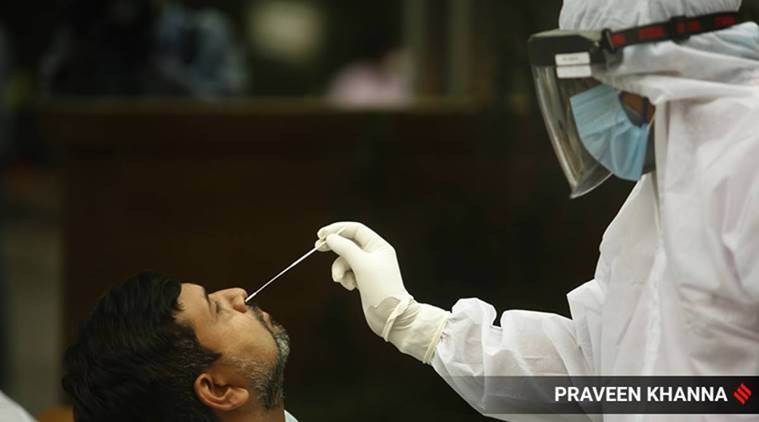 In terms of the number of coronavirus patients per million however, Haryana is the frontrunner.
In terms of the number of coronavirus patients per million however, Haryana is the frontrunner.
The Union Territory of Chandigarh, the joint capital of Punjab and Haryana, has the highest Covid positivity rate (percentage of confirmed cases out of total tests) in the region as compared to the two states and Himachal Pradesh.
It also lags behind in testing, while Himachal not only leads in testing in the region but also has the lowest positivity rate. In terms of the number of coronavirus patients per million however, Haryana is the frontrunner.
Meanwhile, Punjab, with a positivity rate slightly higher than that of Himachal, may soon overtake the hill state in testing once it ramps up the number of tests per day to 20,000 in July.
Covid-19 numbers till June 28 show Haryana leading with 498 cases per million population and Chandigarh in the second spot with 376 cases, followed by Punjab with 175 and Himachal Pradesh with 124 cases. The national average of Covid cases per million is 414.
Till June 28, Chandigarh reported 6,539 tests per million and the positivity rate was 5.8 per cent. In sharp contrast, in the corresponding period, Punjab’s per million testing was 9,703 and a positivity rate of 1.8 per cent. Haryana conducted 9,081 tests per million of population and had a positivity rate of 5.5 per cent.
With per million testing of 10,373 in the region, neighbouring Himachal Pradesh had the lowest positivity rate of 1.2 per cent. The only other state in the country where the positive rate is lower than that of Himachal Pradesh was Arunachal Pradesh – 0.8 per cent and per million testing of 14,846.
The national average of per million testing was 6,978 and that of positive rate was 5.9 per cent by June 28. Maharashtra had the highest positivity rate of 18.2 per cent.
Punjab’s advisor for health and medical education Dr K K Talwar said less testing in Chandigarh was the reason that the UT had a higher highest positivity rate in the region. “If there is more testing, the number of persons testing negative also increases and the positive rate comes down,” he added.
Punjab has gradually ramped up testing in about two and half months – from 40 to around 7,000 daily. According to Chief Minister Capt Amarinder Singh, testing capacity in the state will soon reach 20,000 daily.
Apart from three government medical colleges and other facilities including outside the state where samples are currently tested, Punjab is also coming up with four new laboratories within the state for testing. Around 3 lakh tests have been conducted in Punjab since the outbreak began.
Punjab Additional Chief Secretary (Health) Anurag Aggarwal said that apart from the three Ts – Testing Tracing and Treatment – they are also “focusing on reducing the mortality rate”.
He said, “House to house surveys are being carried out in micro containment zones. Vulnerable population from containment zones is being shifted to institutional quarantine. For faster test results, we have installed 15 Trunat machines and have placed an order for another 15. The test result time is otherwise two days after collection of samples, but with the Trunat machine, we know the test result in less than an hour. We are also allowing private facilities to use Trunat machines.”